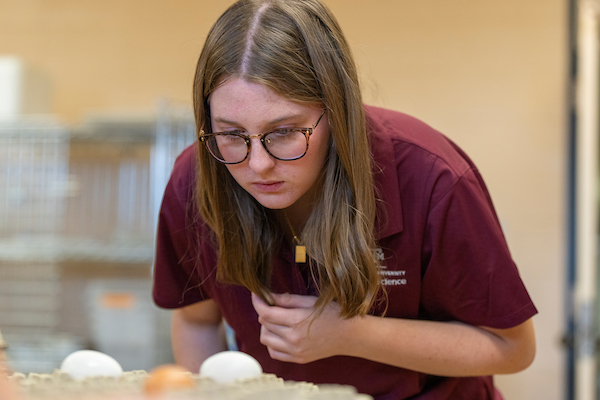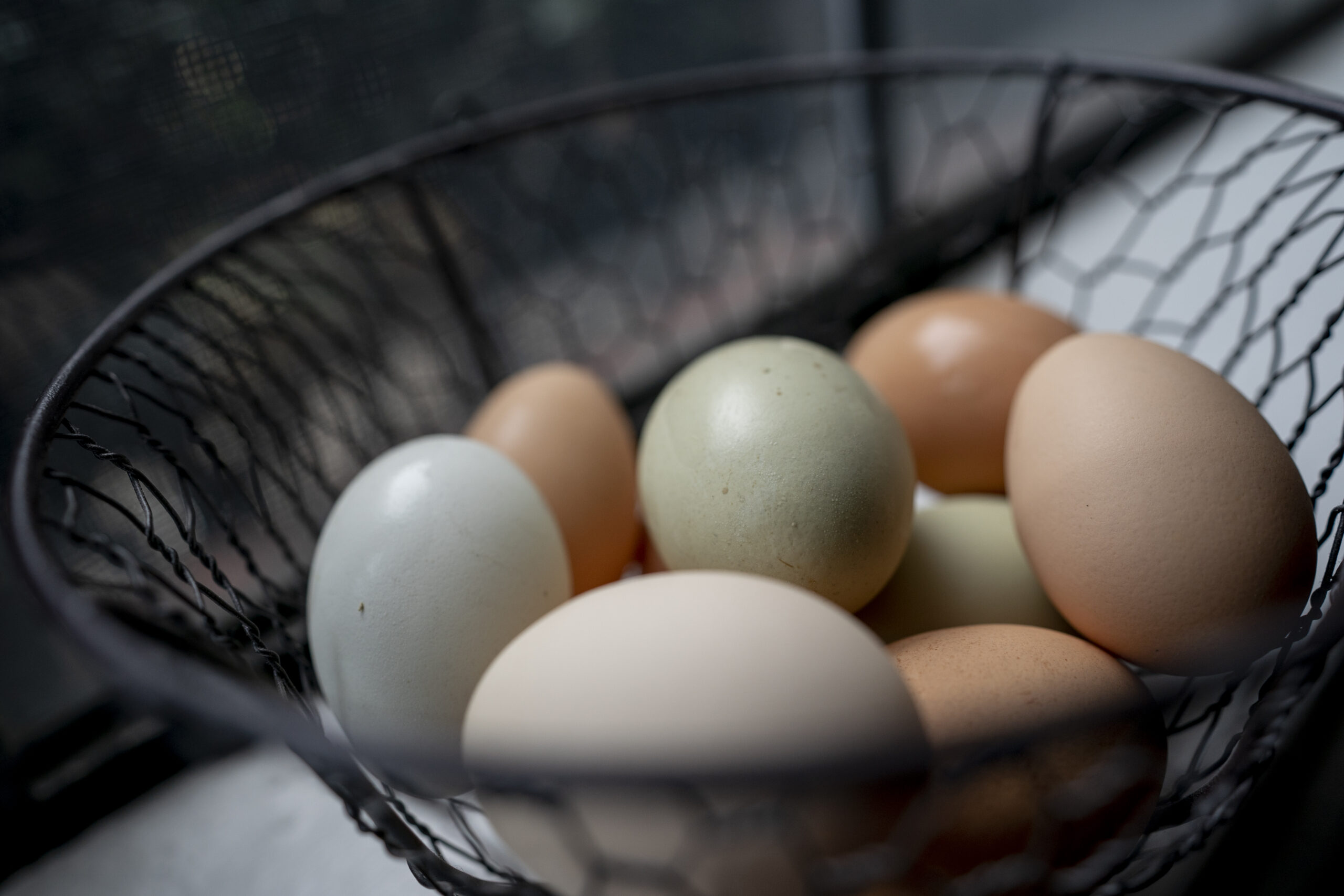Why are eggs different colors?
Eggs-ploring why chicken eggs come in different colors, shapes, shades
Have you ever wondered why chicken eggs can be different colors? While most eggs are white or brown, they also come in colors like cream, pink, blue and green. In addition — and this is no “yolk” — some are even speckled.
According to a Texas A&M AgriLife Extension Service poultry specialist, many factors can impact a hen’s egg-making process.
Let’s shell out some information about the egg-straordinary world of egg colors.

Chicken earlobes help predict egg color
Egg color is mostly determined by genetics. If you’re looking for a hint, a good way to guess what color eggs a hen will lay is to look at her earlobes.
“Generally, hens with white earlobes will produce white eggs,” said Gregory Archer, Ph.D., AgriLife Extension specialist in the Texas A&M College of Agriculture and Life Sciences Department of Poultry Science, Bryan-College Station. “But all eggs start out white because the shells are made from calcium carbonate. They get their color from the hen’s genetics as the egg forms.”
Archer said, more often than not, chickens with lighter earlobes also have white feathers and produce white eggs. Those with darker feathers and darker earlobes will likely produce more colorful eggs.
Chicken egg formation
AgriLife Learn
Looking for something a bit more in depth? AgriLife Learn breaks down the science behind shell color, breed traits and egg-formation quirks — straight from the experts in poultry science.
Nature has its own way of coloring eggs, and it doesn’t require boiling water, food coloring or paintbrushes. Let’s eggs-plore how this happens.
Different eggshell colors come from pigments deposited onto the shell as the egg forms in the hen’s oviduct.
A chicken yolk, or ovum, forms in the hen’s ovaries. A fully formed ovum leaves the ovary and enters the oviduct. There, it goes through a five-stage process to help ensure the yolk makes it safely to the outside world. The entire egg-forming process usually takes a little more than 24 hours.
It’s during the fourth stage of this process involving the shell gland that pigments are deposited onto the shell, producing its color. So, in short, different chicken breeds deposit different pigments on the shell as it forms, changing its exterior — and sometimes its interior — shell color.
A pigment of your imagination
White leghorn chickens lay white-shelled eggs, and breeds like Plymouth Rocks and Rhode Island Reds lay brown-shelled eggs. The shells are brown because a pigment called protoporphyrin is deposited onto the shell. But because this happens late in the shell formation process, the pigment doesn’t penetrate the shell’s interior.
“This is why when you crack open a brown egg, you will see the interior of most of the shells remains white,” Archer said.
A pigment called oocyanin is deposited on the egg of the Ameraucana breed, penetrating the outside and inside of the shell and making both blue. Other breeds such as Araucana, Dongxiang and Lushi lay blue or blue-green eggs.
An olive egg results from a cross between a brown egg-laying breed and a blue egg-laying breed. The hen produces a brown pigment that blends into the blue shell of the egg, resulting in a greenish-hued egg. The darker the brown pigment, the more olive-colored the egg appears.
Other chickens that lay colorful eggs include the Barred Rock, Welsummer and Maran, with the color of the egg depending on the breed and its genetics.
Some speculation about speckled eggs
As it turns out, the speckles on speckled eggs are just extra calcium deposits.

One reason for the speckled-egg spectacle is that speckles are formed when the egg-shaping calcification process is disturbed. Another possible reason is a defect in the shell gland. Then again, it could result from excess calcium in the hen’s system.
Sound a little scrambled? Don’t worry about it. Just keep your sunny side up and know there’s probably more than one explanation for this speck-tacular occurrence.
Oh, and although technically considered “abnormal,” speckled shells can sometimes be stronger than those without speckles.
Egg-straneous factors change shell color, shape
While genetics primarily determine egg color, other factors can also influence the color and other characteristics of the shell. These factors include a hen’s age, diet, environment and stress level.
“As they age, hens that lay brown-colored eggs may start to lay larger and lighter-colored eggs,” Archer said. “But though this may produce an egg of a lighter or darker shade, it will not alter the egg’s basic color.”
While not directly associated with color, an oddly or irregularly shaped egg may occasionally pop out. This may result from a problem during the hen’s egg-forming process.
Archer said both very old and very young hens are the most likely to lay abnormally shaped eggs.
“Stress factors like disease, heat or overcrowding may also affect the hen and impact the size, shape and quality of the egg,” he said. “A lot also depends on the amount of calcium the hen has in its body and can provide for the egg-making processes.”

All things yolk: Color, nutrients and double yolks
You may also be wondering if the egg’s shell color affects its yolk color. It doesn’t, but the hen’s diet certainly does.
For example, if a pasture-raised hen eats plants with yellowish-orange pigmentation, the yolks can take on a more orange color. If she eats mainly a corn- or grain-based diet, the yolk is more likely to be a pale yellow.
Here’s a little egg-stra information for you. Research shows that darker, more colorful yolks have the same amount of protein and fat as lighter yolks. However, studies have shown that eggs from pasture-raised hens can have more omega-3s and vitamins and less cholesterol.
Speaking of yolks, this will crack you up. Sometimes an egg will have two yolks. While some people think a double yolk is good luck, the reason is more mishap than fortune. A double yolk is a fluke that occurs when a hen ovulates too rapidly, releasing two yolks, usually about an hour apart. These yolks go into the oviduct and eventually both end up in the same shell.
Hormonal changes or a hyperactive ovary will also cause these double releases. These “double-yolkers” are most common among younger chickens because their reproductive systems have not yet fully developed.






